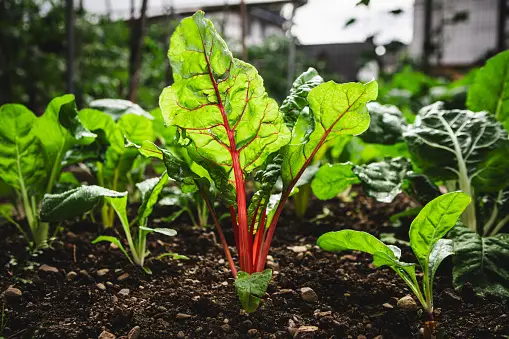The farm-to-table movement has been gaining momentum recently. More people want to know where their food comes from and how it is made.
The farm-to-table movement has been gaining momentum recently. More people want to know where their food comes from and how it is made.
This movement is about connecting consumers with local, sustainable, and often organic food. It is reshaping cooking in many parts of the world. The farm-to-table movement promotes eating fresh, healthy, and locally sourced produce. This is good for the environment. It is also good for people's health and well-being.
The idea of farm-to-table is deeply rooted in history. It represents a shift to more sustainable, ethical, and local eating. This movement is not just a food trend. It is a commitment to sustainability, freshness, and community support.
It includes many types of suppliers. These include small-scale farmers, artisanal producers, and local food hubs. The farm-to-table movement is also about creating a direct link. It connects the people who grow our food to those who eat it. This fosters a sense of connection and community.
Understanding the Local Food Movement
The local food movement is a growing trend. It advocates for eating food grown or made nearby. This concept represents a shift toward more sustainable, ethical, and local food. It is a shift in consumption patterns. Let's look at the origins and evolution. We'll also cover the key principles and benefits. These are for communities of the local food movement.
Origins and Evolution
The local food movement started in the early 20th century. People began to question farming's industrialization. They saw it harm the environment and local economies. In recent years, the movement gained momentum. It has become a big trend that is reshaping cooking.
Key Principles
The local food movement is centered around several key principles, including:
- Supporting local farmers and businesses is easy. Just buy their food. It helps the local economy by supporting them.
- The local food movement promotes sustainability. It focuses on creating a more sustainable and eco-friendly food system. It does this by prioritizing local and often organic produce. Farmers' markets and small stores sell this produce. It's not sold at global superstores.
- The local food movement promotes community building. It does this by bringing people together around shared values. These include sustainable agriculture, healthy food, and local economies.
- The local food movement encourages healthy eating. It does this by promoting the consumption of fresh, whole foods. These foods are in season and grown or made locally.
Benefits Of From Farm To Table for Communities
The local food movement offers many benefits for communities, including:
- It reduces environmental impact. It prioritizes local and often organic produce. The local food movement helps to reduce the impact of making and moving food.
- The local food movement promotes food security. It does this by reducing reliance on global food systems. It also does this by creating a more resilient local food system.
- The local food movement encourages healthy eating. It does this by promoting fresh, whole foods that are in season and grown or made nearby. This can lead to better health.
- The local food movement supports local farmers and businesses. It makes the local economy stronger and creates jobs in the community.
- Farm-to-table practices reduce food transportation distances. This cuts carbon emissions and promotes sustainable farming.
- Farm-to-table practices foster transparency and trust. They connect consumers with the sources of their food. This strengthens community bonds.
Factors Hindering the Farm-to-Table Movement
- Locally sourced produce may have limited availability. This is especially true in regions with short growing seasons. This can reduce the variety and availability of fresh produce year-round.
- Farm-to-table products often cost more. They have a premium price compared to conventionally sourced alternatives. This high cost may stop some consumers. It is a big problem for those on limited budgets.
- Supply chains can become complex. They must coordinate with many local suppliers and farmers. This complexity leads to challenges in logistics, quality control, and supply consistency.
- Local farmers depend on weather and climate. Variations in them can impact crop yields and availability. Extreme weather events, like droughts or floods, can disrupt local food production. They can also disrupt food supply.
- Infrastructure is limited in some areas. It lacks what's needed to support farm-to-table initiatives, like distribution networks and storage. This can be hard. It makes it tough to get local products to market quickly and well.
- Many consumers may not fully understand the benefits of farm-to-table. They may also be unaware of how to access locally sourced products. It is essential to educate consumers about the importance of local food systems. They must also learn how to find and buy local products.
Despite these challenges. But, several strategies and initiatives can help. They can overcome barriers to the farm-to-table movement:
- We should invest in local food infrastructure. This includes food hubs, farmer's markets, and community-supported agriculture (CSA) programs. They improve distribution and increase consumer access to local products.
- We should support policies and initiatives that prioritize local food. These include farm-to-school programs, government procurement policies, and incentives for local food production.
- We provide money and tech help to small-scale farmers and food producers. This helps them adopt sustainable farming and boost productivity. It also helps them access new markets.
- We will raise awareness. We will educate consumers about the benefits of local food systems. These include better food, a healthier environment, and stronger communities.
Starting a Farm-to-Table Initiative in Your Community: Tips for Beginners
Embarking on a farm-to-table initiative in your community can be a rewarding endeavor that promotes local agriculture, supports small-scale farmers, and fosters community connections. Here are some tips to help you get started:
- Connect with Local Farmers: Identify and collaborate with local farmers and producers interested in participating in a farm-to-table initiative.
- Build Partnerships: Establish partnerships with businesses, restaurants, schools, and community organizations to create a supportive network.
- Develop Distribution Channels: Create farmer's markets, CSA programs, or online platforms to connect farmers with consumers.
- Educate Consumers: Host workshops, events, and tours to raise awareness about local food and how to access it.
- Promote Sustainable Practices: Encourage farmers to adopt sustainable farming methods and certifications.
- Advocate for Policy Change: Lobby for policies that support local food systems and initiatives.
- Foster Collaboration: Encourage networking and collaboration among farmers, producers, and consumers.
- Measure Impact: Track key metrics to gauge the success and impact of the initiative.
Communities That Have Fully Embraced From-Farm-To-Table Approach
- Portland, Oregon, USA: Known for its vibrant food scene, Portland boasts numerous farmers markets, farm-to-table restaurants, and community-supported agriculture (CSA) programs. Residents actively support local farmers and celebrate seasonal, locally sourced ingredients.
- Copenhagen, Denmark: Copenhagen leads in sustainable gastronomy, with renowned restaurants prioritizing locally sourced, seasonal ingredients. Urban farming initiatives and food waste reduction programs further promote sustainability.
- Oaxaca, Mexico: Oaxaca's rich culinary heritage shines through its markets, offering an abundance of locally sourced produce and traditional ingredients. The cuisine celebrates the flavors of the region's fertile land.
- Melbourne, Australia: Melbourne's farm-to-table scene thrives with farmers markets and restaurants showcasing locally grown, organic produce. Many establishments prioritize sustainability and ethical food practices.
- Siena, Italy: Siena's farm-to-table cuisine highlights locally sourced ingredients and traditional Tuscan flavors. The city's culinary traditions celebrate the region's agricultural heritage and emphasize simplicity and quality.
Wrapping it up
In conclusion, the local food movement represents a shift. It is towards a more sustainable, clear, and community-focused food system. By embracing the ideas of the local food movement, consumers can play a key role.
They do this by supporting local farmers and producers. They will shape the future of food production and consumption. We strive to build a healthier food system. Local food movements offer a promising path. They lead to a fair and sustainable future for all.
They do this by supporting local farmers and producers. They will shape the future of food production and consumption. We strive to build a healthier food system. Local food movements offer a promising path. They lead to a fair and sustainable future for all.


























